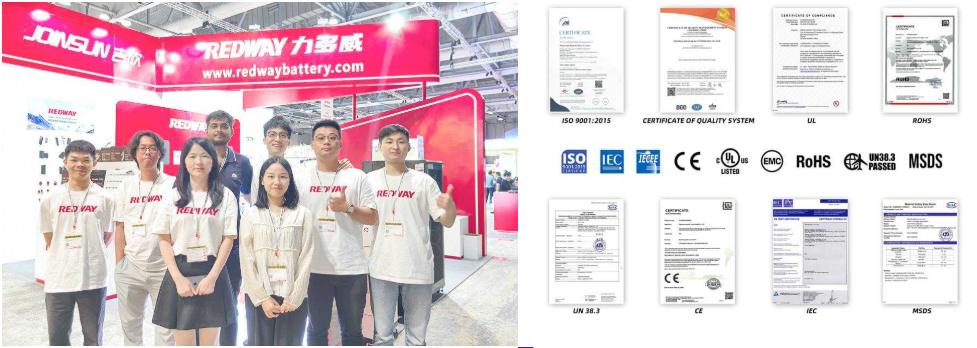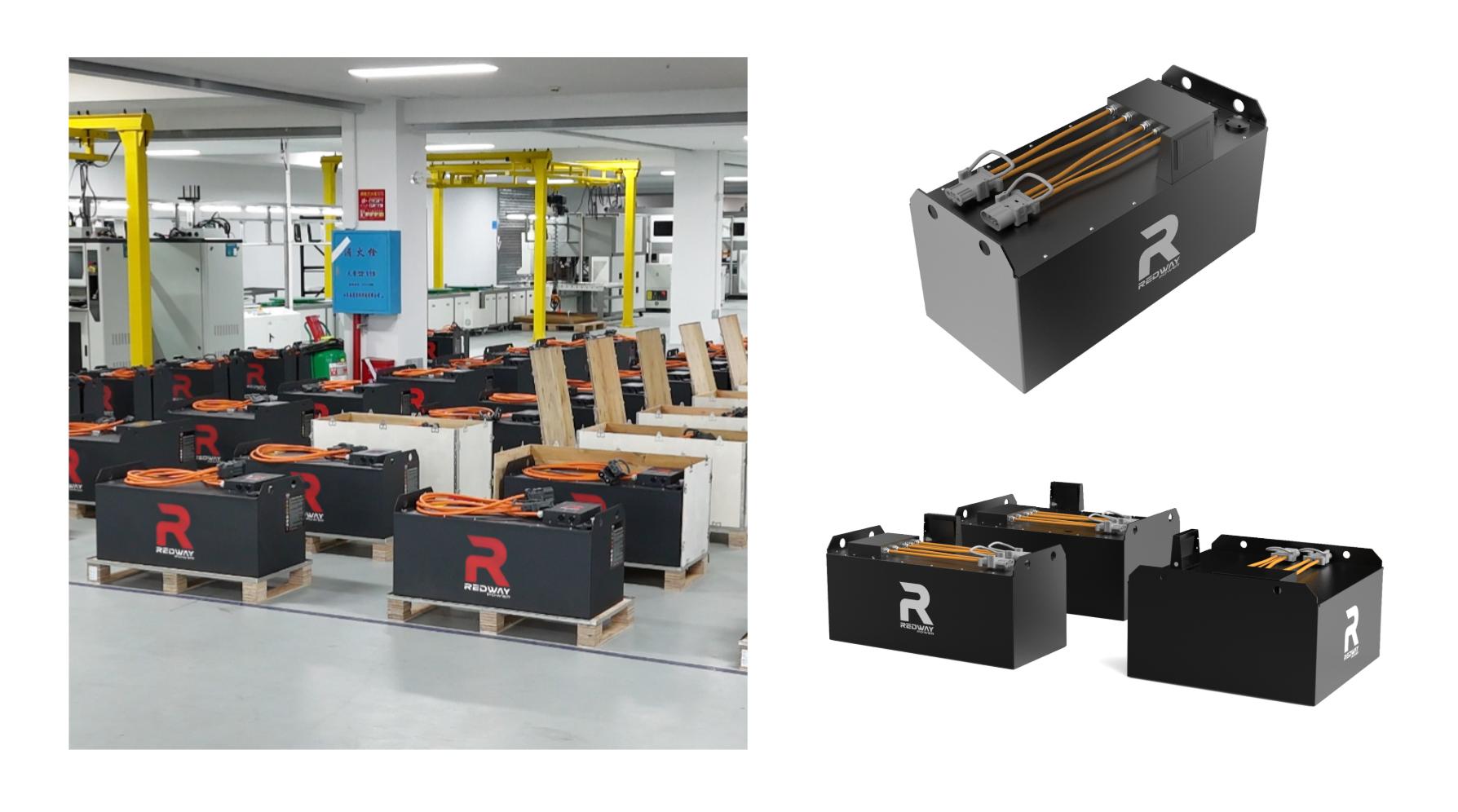Lithium-ion forklift power uses advanced battery technology to deliver longer runtime, faster charging, and reduced maintenance compared to traditional lead-acid batteries. These batteries are energy-dense, eco-friendly, and ideal for high-demand logistics operations. With a lifespan of up to 3x longer than alternatives, they minimize downtime and operational costs while supporting sustainable practices through recyclable components.
48V 300Ah Lithium Forklift Battery
How Do Lithium-Ion Batteries Enhance Forklift Performance?
Lithium-ion batteries provide consistent voltage output, eliminating the “voltage sag” seen in lead-acid batteries. This ensures full power until depletion, boosting productivity in multi-shift operations. Their rapid charging capability (1-2 hours) supports opportunity charging during breaks, whereas lead-acid requires 8-10 hours. For example, BMW reduced downtime by 30% after switching to lithium-ion in their warehouses.
What Are the Cost Benefits of Lithium-Ion Forklift Power?
Though lithium-ion batteries have a higher upfront cost ($8,000-$15,000 vs. $3,000-$6,000 for lead-acid), they offer 50% lower lifetime costs. Savings stem from zero watering/equalizing, 3,000+ cycles (vs. 1,500 for lead-acid), and 30% energy efficiency. Toyota Logistics reported a 40% reduction in energy costs over five years after adoption.
Extended cost analysis reveals that lithium-ion’s ROI becomes evident within 18-24 months for operations running 2-3 shifts daily. Unlike lead-acid batteries, which degrade faster under partial charging, lithium-ion thrives in fast-charging scenarios. A 2023 study by Material Handling Institute showed facilities saving $12,000 annually per forklift through reduced labor (no battery swaps) and lower electricity bills. Additionally, lithium-ion batteries retain resale value due to recyclable materials, offsetting initial investments further.
| Cost Factor | Lithium-Ion | Lead-Acid |
|---|---|---|
| 5-Year Energy Cost | $4,200 | $6,800 |
| Maintenance Labor | $500 | $3,200 |
| Replacement Cycles | 1 | 3 |
How Does Lithium-Ion Technology Improve Workplace Safety?
Lithium-ion batteries are sealed, preventing acid leaks and fumes. Built-in Battery Management Systems (BMS) monitor temperature, voltage, and current to prevent overheating. In contrast, lead-acid batteries emit hydrogen gas during charging, requiring ventilation. Amazon warehouses reported a 25% drop in battery-related incidents post-transition.
Can Lithium-Ion Forklift Batteries Withstand Heavy-Duty Cycles?
Yes. Lithium-ion batteries handle 3,000+ full cycles with minimal capacity loss (80% retention after 2,000 cycles). They thrive in cold storage (-20°C) without performance drops, unlike lead-acid, which loses 50% capacity at 0°C. Walmart’s cold chain operations saw a 20% productivity increase using lithium-ion in freezer sections.
Beyond cold storage, lithium-ion excels in high-throughput environments like automotive manufacturing, where forklifts undergo 18-20 daily cycles. John Deere’s assembly plants reported zero unplanned battery replacements in three years after adoption. The batteries’ ability to handle partial-state-of-charge (PSOC) cycling reduces wear, unlike lead-acid, which requires full discharges to avoid sulfation. Third-party stress tests by UL Solutions confirmed lithium-ion maintains 85% capacity after 5,000 shallow cycles (50% depth of discharge), making them ideal for just-in-time logistics.
Know more:
Who Are the Leading EV Battery Manufacturing Companies Globally?
What Are the Key Considerations for Electric Forklift Batteries?
What Makes Lithium-Ion Forklift Power the Future of Material Handling?
What Are the Essential Components of Forklift Charging Infrastructure?
What Is a Battery Management System and Why Is It Crucial?
How Do Energy-Efficient Forklift Technologies Reduce Operational Costs?
Why Are Lithium-Ion Batteries More Environmentally Friendly?
Lithium-ion batteries are 95% recyclable, with reusable cobalt, nickel, and lithium. They consume 30% less energy and eliminate lead disposal concerns. FedEx achieved a 15% reduction in carbon footprint after adopting lithium-ion across its hubs. Lead-acid recycling rates are high (99%), but mining and smelting contribute to soil/water contamination.
What Innovations Are Shaping the Future of Lithium-Ion Forklifts?
Solid-state lithium batteries (2025-2030 rollout) promise 2x energy density and enhanced safety. Wireless charging pads and AI-driven predictive maintenance are emerging. For instance, Tesla’s Megacharger prototypes enable 15-minute forklift recharges. Hydrogen fuel cell hybrids are also being tested for continuous 24/7 operation in ports like Rotterdam.
“Lithium-ion forklifts are revolutionizing material handling by merging reliability with sustainability. At Redway, we’ve seen clients cut energy costs by 40% while achieving 99.5% uptime. The ROI isn’t just financial—it’s environmental. Future advancements like AI-optimized charging will further redefine efficiency.”
— Redway Power Systems Engineer
Conclusion
Lithium-ion forklift power outperforms legacy systems through unmatched efficiency, safety, and sustainability. As industries prioritize green logistics and automation, its adoption will accelerate, driven by falling costs (projected 30% drop by 2030) and tech breakthroughs. Companies investing now will gain a competitive edge in operational agility and ESG compliance.
FAQs
- How long do lithium-ion forklift batteries last?
- 8-10 years or 3,000+ cycles, 3x longer than lead-acid.
- Are lithium-ion forklifts safer?
- Yes—no fumes, leaks, or maintenance hazards.
- Can I retrofit my lead-acid forklift?
- Most models support lithium-ion upgrades with compatible chargers.
- Do lithium-ion batteries work in cold environments?
- Yes, they maintain performance at -20°C.
- What’s the payback period for switching?
- 2-3 years via energy savings and reduced downtime.






